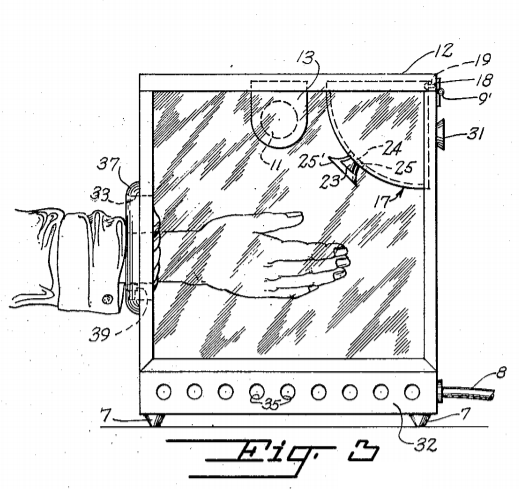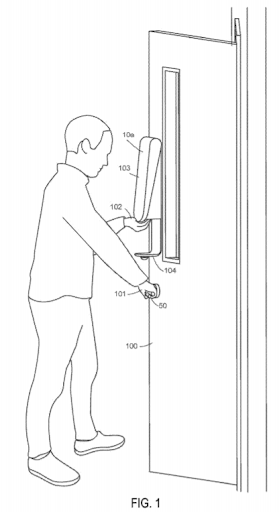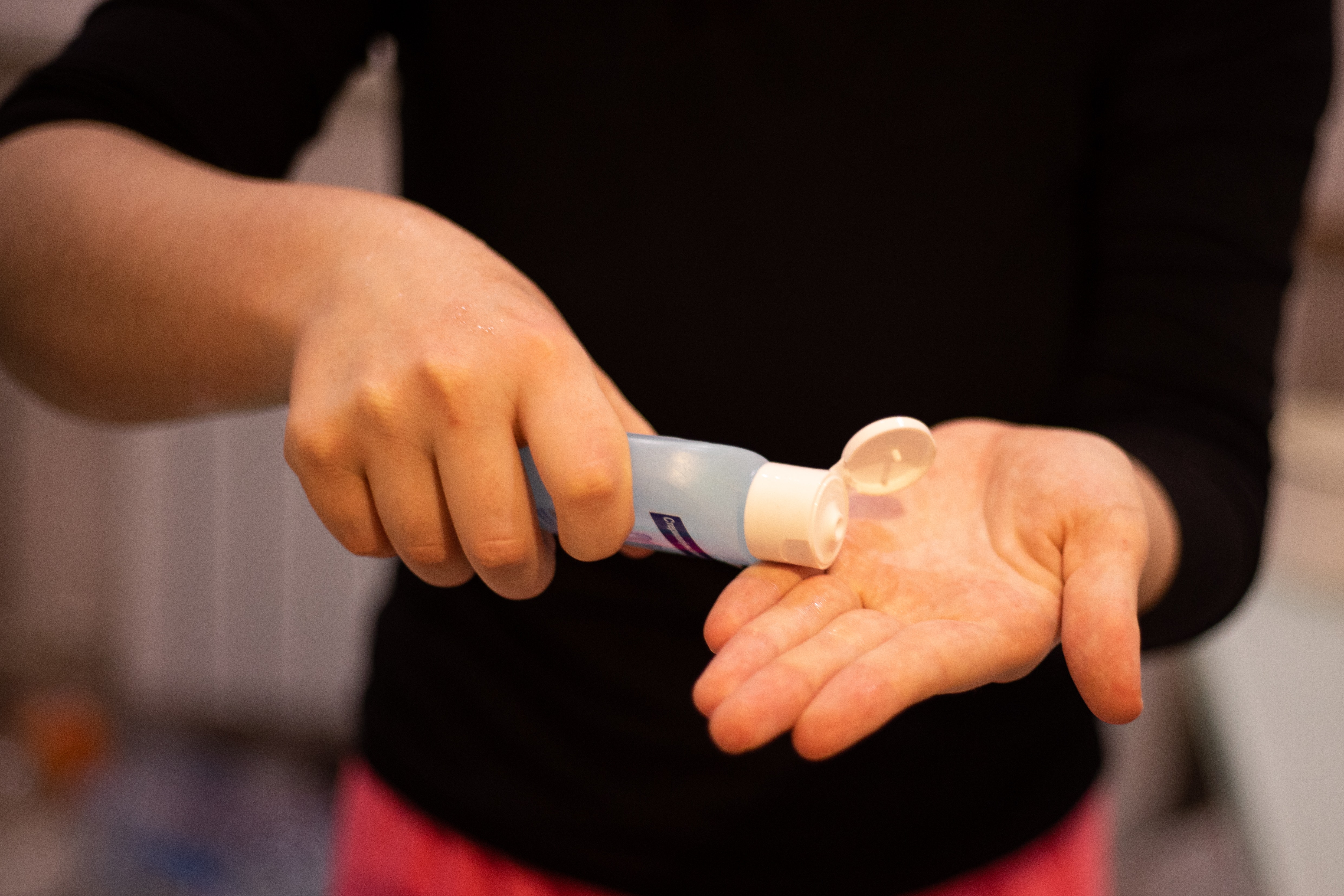This is the second installment in our personal protective equipment innovation series. In part one, we discussed the evolution of face masks and gloves during the COVID-19 pandemic.
Methods of Increasing Hand Sanitization
Health protection products have been around long before COVID-19, and among them all, hand sanitizer is likely the most prevalent because it is easy to use for disinfecting. Most stores even sell them in various scents, colors, and, travel-sized cases as if they were nothing more than a cute accessory that comes in handy every now and again.
Among hand sanitizer patents is another unique patent from the past, US2814081A applied for in 1955, and granted in 1957. This patent involves a method of optimizing hand sanitization speed and effort. Instead of having to rub the usual liquid sanitizer into your hands, this method involves inserting your hands in a housing device that sprays the hands with a ‘highly volatile germicidal solution.’ The description mentions that the solution consists of pure grain alcohol (to disinfect), and an emollient (to leave the hands smooth), and a perfume (for a nice scent).

The housing from patent US2814081A which one would input their hands into for speedy sanitization. Source: ktMINE Patents Application
Within the container is also a hot air blower-dryer and an ultraviolet lamp to kill the germs inside the device. This method is claimed to support sanitization without the drawbacks of skin dryness, and the time spent to go to the nearest sink and effectively wash hands every time a foreign object is touched.
Alcohol is a common ingredient used in hand sanitizers. However, alcohol is known to dry out the skin, so moisturizers are often added to combat this. This solution is flawed because this composition has a tendency to separate over time resulting in an unequal distribution of moisture and disinfectant. In 2016, application EP3471696A4 claims to have solved this issue with a specific composition for hand sanitizer. The ingredients claimed in the patent are a combination of any of the following: squalane, squalene, glycolipids, and phytosterols. Stated in the patent’s description, squalene supports the “formation and functions of the cellular lipids found in human skin” and “are responsible for the integrity and healthy appearance of the skin’s surface.” Another potential component of the sanitizer is plant oil, a natural source of squalene.
Lastly, is application US201916566463A which was filed in 2019. This patent concerns the mounting of an advanced hand sanitizer near often touched objects, such as door handles. By placing the hand sanitizer near a commonly used object, it’s convenience promotes its use. The application described the hand sanitizer as capable of containing an accelerometer enabling it to detect the door opening. It could use this data to determine the rate of sanitization. The sanitizer could also have a proximity sensor to determine when someone is approaching. This data could then be used in combination with its user interference system to further encourage sanitization with audio, a display of images, a smell, and/or a colored light indicator.

Illustration of the use of the hand sanitizer from application US201916566463A. Source: ktMINE Patents Application
It is interesting to see the way events have caused certain, previously overlooked products to have a unique relevance in the lives of people around the world. The patents behind these healthcare products help show the extent to which these products can grow to better meet our needs. Hopefully, looking at these patents further inspires innovation in ourselves to optimize and promote the protection of our health. We can already see the results of such inspiration today from those who are making solutions to the current issues experienced by the lack and constant use of these healthcare products.




